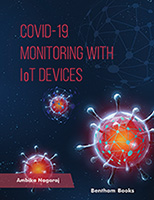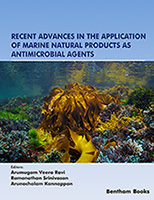Infectious diseases continue to be an enduring threat to human survival and well-being. The recent
Ebola epidemic in Western Africa has revealed a number of limitations at every front, including
lack of timely response, improper disease surveillance, failure of national governments to control
epidemics and most importantly, the failure of the pharmaceutical industry to develop a single
effective drug for a disease which is known to be so deadly since the last four decades. This is
indeed an early warning for other deadlier future epidemics which may soon emerge.
Continuous research on new potent anti-infective drugs, and efforts to understand infections at the
molecular level to identify new drug targets are urgently needed. The 4th volume of the eBook
series “Frontiers in Anti-Infective Drug Discovery” is therefore timely and important. It is a
compilation of five well written chapters, contributed by leading practitioners in the field.
The chapter by Fornells and Couceiro provides details of the emerging resistance against flu
treatments with anti-neuraminidase drugs. The presence of mutations in the influenza virus,
responsible for producing resistance against anti-neuraminidase drugs, is discussed in detail.
Drug repositioning is an important approach for drug discovery and development. Oliva et al. have
conducted extensive studies on the use of the anti-depressant drugs, such as phenothiliazines as
anti-trypanosomal drugs. Trypanosoma cruzi is the causative agent of a common parasitic tropical
disease, called Chagas disease. These well known anti-depressant drugs exert their trypanocidal
effects by inhibiting trypanothione reductase, an enzyme which is essential for the redox defense
system of the parasite. This article provides strong support for the drug repositioning / repurposing
approach, i.e. for finding new health benefits in old drugs.
Bouriotis et al. have reviewed the current state of research with respect to bacterial polysaccharide
deacetylases as drug targets for antibacterial drug development. Polysaccharide deacetylase plays
an important role in the bacterial life cycle, and its inhibition is an important approach towards the
development of new anti-bacterial drugs.
Revuelta et al. present a review on the potential of RNA-binding drugs as anti-infectious agents.
They describe the use of positively charged aminoglycoside class of compounds that bind with
ribosomal RNA, and can serve as anti-bacterial agents. These compounds can also be used as
antiviral drugs against other diseases.
Finally, Boso-Ribelles et al. have contributed a comprehensive review on the changing landscape
of antibiotic development, which does not seem very promising. They summarize the outcomes of
several drug discovery initiatives, new antibiotics in the pipeline, and current state of research on
old drugs to develop new antibiotics. This chapter, in brief, is a charge sheet on the negligence
towards this important field, which is now causing tremendous human suffering.
This volume is the result of hard work of many eminent researchers. We wish to express our
profound gratitude to them. We would also like to acknowledge the dedication and hard work of the excellent team of Bentham Science Publishers, led by Mr. Mahmood Alam, Director of
Bentham Science Publishers. The efforts of Ms. Fariya Zulfiqar, Assistant Manager Publications,
deserve special appreciation.
Prof. Atta-ur-Rahman, FRS
Honorary Life Fellow
Kings College
University of Cambridge
UK
Prof. M. Iqbal Choudhary
H.E.J. Research Institute of Chemistry
International Center for Chemical and Biological Sciences
University of Karachi
Pakistan





